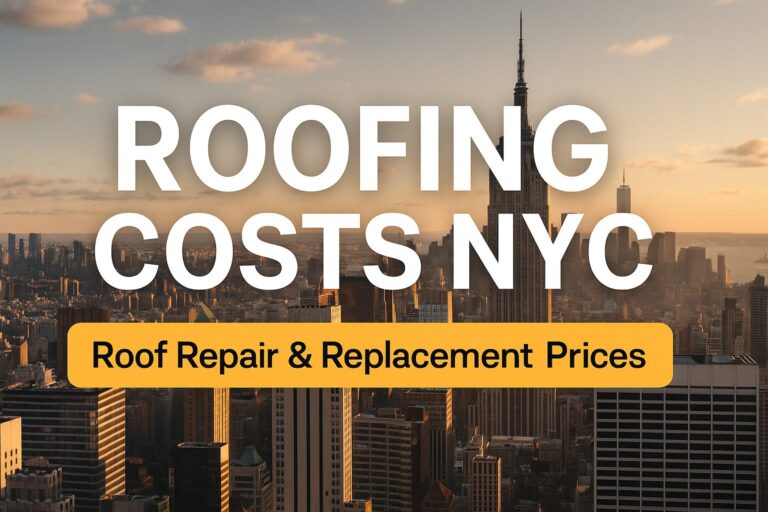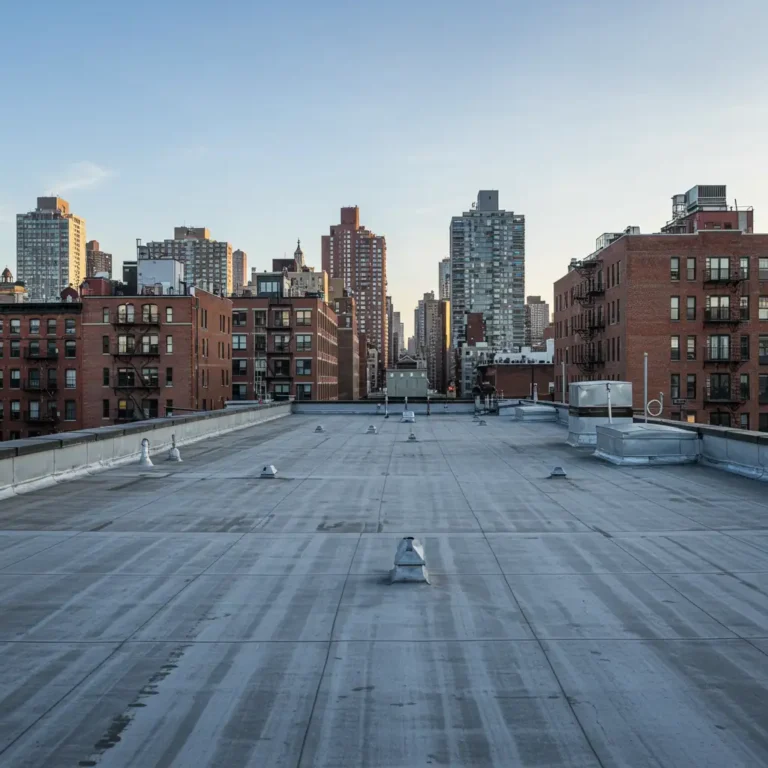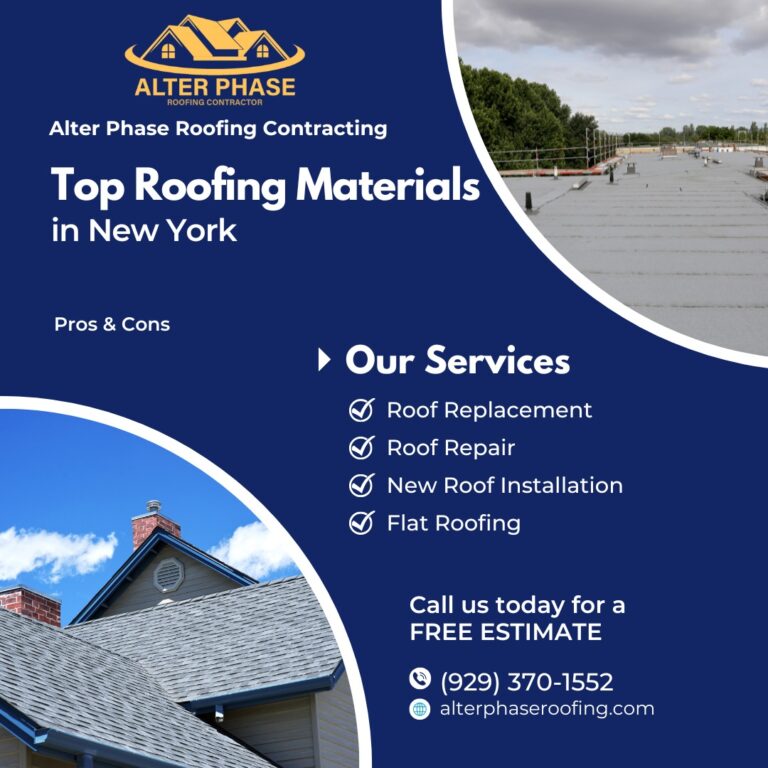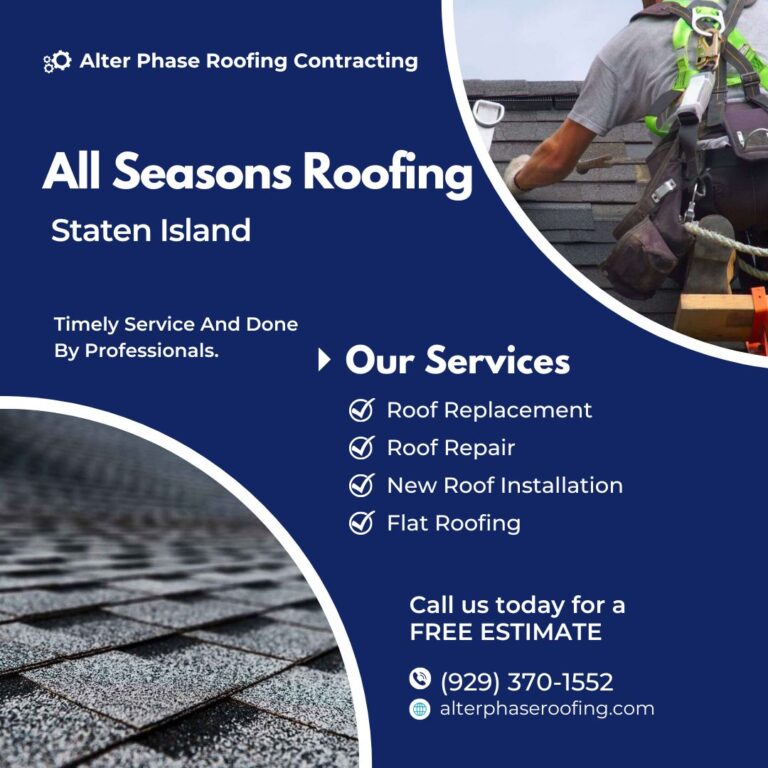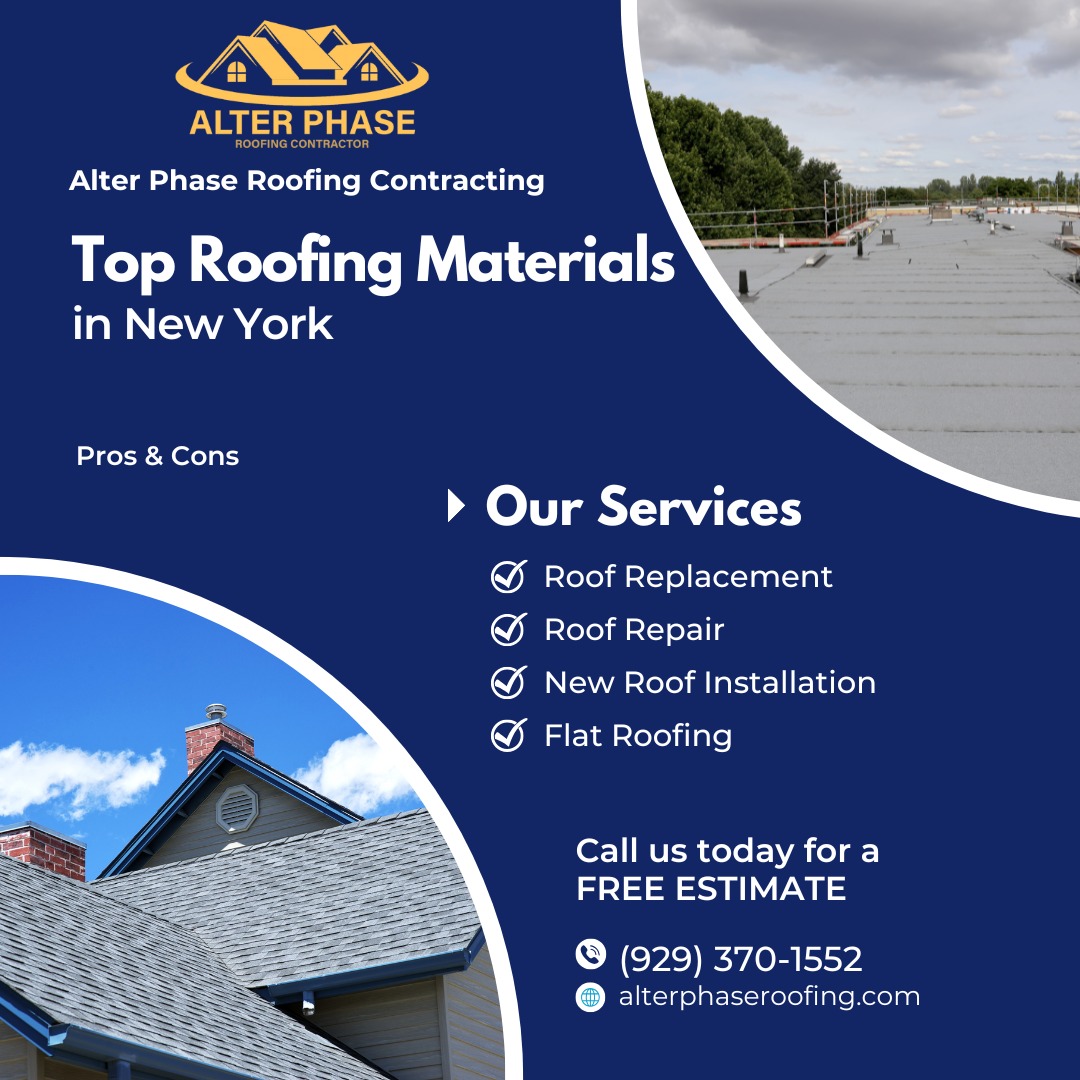
When it comes to replacing the roof of your home, selecting the right material is crucial for ensuring durability, energy efficiency, and aesthetic appeal. New York’s diverse climate—characterized by harsh winters, humid summers, and occasional storms—demands robust roofing solutions that can withstand varying weather conditions.
In this comprehensive guide, we will explore the top roofing materials for homes in New York—detailing their pros and cons to help homeowners make informed decisions.
1. Asphalt Shingles
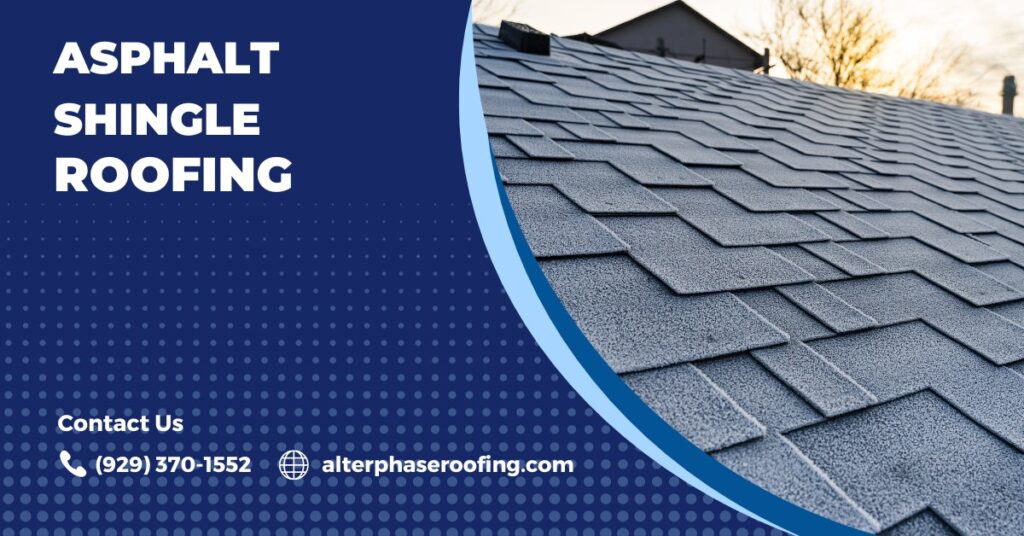
Overview
Asphalt shingles are one of the most popular roofing materials across the United States, including New York. They are favored for their affordability, ease of installation, and aesthetic versatility.
Pros
- Cost-Effective: Asphalt shingles are among the most affordable roofing options available, making them accessible for a wide range of budgets.
- Variety of Styles: Homeowners can choose from various colors, textures, and styles to complement their home’s architecture.
- Easy Installation: The installation process is relatively straightforward, reducing labor costs and time.
- Good Weather Resistance: Modern asphalt shingles offer reasonable protection against wind, rain, and snow, making them suitable for New York’s climate.
Cons
- Shorter Lifespan: Asphalt shingles typically last about 15 to 30 years, which is shorter than other roofing options.
- Susceptible to Wind Damage: High winds can cause shingles to lift or become damaged, particularly on poorly installed roofs.
- Moss and Algae Growth: In shaded or humid areas, asphalt can be prone to moss and algae growth, potentially leading to further degradation.
2. Flat Roofing Systems

Overview
Flat roofs are commonly found in urban areas, particularly on commercial buildings, but are also popular for certain residential styles, particularly in modern and industrial designs.
Pros
- Affordability: Flat roofing can be a cost-effective solution, both in materials and installation.
- Ease of Maintenance: Accessing a flat roof for repairs and maintenance is generally easier than on pitched roofs.
- Versatility: Flat roofs can be used for a variety of purposes, including rooftop gardens, terraces, and solar panel installations.
Cons
- Drainage Issues: Flat roofs can be prone to drainage problems, leading to water pooling and potential leaks if not properly designed.
- Shorter Lifespan: Many flat roofs, particularly those made from single-ply membranes, typically last around 15 to 30 years.
- Higher Maintenance Needs: Flat roofs may require more frequent inspections and maintenance to mitigate the risks of leaks.
3. Metal Roofing
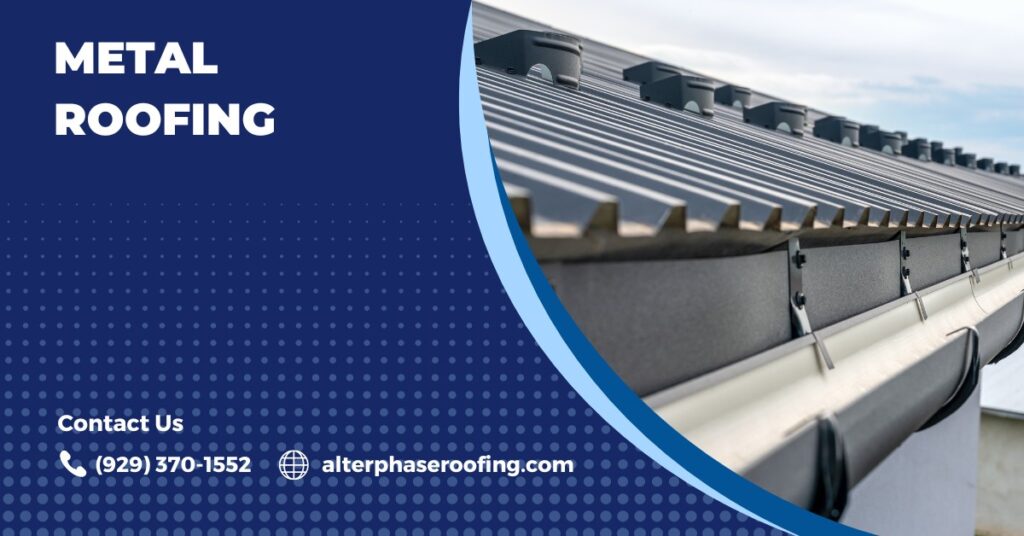
Overview
Metal roofing has gained popularity among homeowners looking for durable and energy-efficient options. Common materials include steel, aluminum, and copper.
Pros
- Longevity: Metal roofs can last 40 to 70 years, significantly outlasting many other materials.
- Energy Efficiency: Metal reflects solar heat, leading to lower cooling costs during hot summer months.
- Fire Resistance: Metal roofing is highly resistant to fire, making it a safer option in urban and suburban areas.
- Lightweight: Compared to traditional materials, metal roofing is lighter, reducing the structural load on your home.
Cons
- Higher Initial Costs: The upfront cost of metal roofing is higher than asphalt shingles, which might be a barrier for some homeowners.
- Noise: Rain and hail can create noise on metal roofs, which may be a concern for some people.
- Denting: Depending on the metal chosen, roofs can be susceptible to denting from hail or falling branches.
4. Slate Roofing
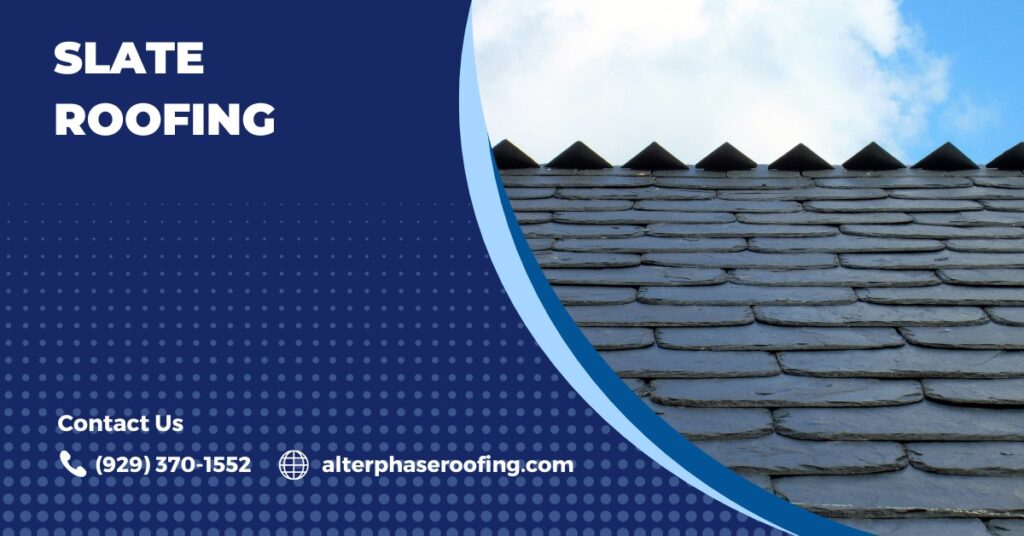
Overview
Slate roofing is renowned for its natural beauty and unparalleled durability, making it a premium choice for upscale homes. This natural stone roofing material is most commonly used in historic and luxury homes across New York.
Pros
- Exceptional Longevity: Slate roofs can last over 100 years, often outlasting the structures they cover.
- Aesthetic Appeal: Slate is available in a variety of colors and textures, providing a unique appearance that can enhance curb appeal.
- Fire Resistant: Like metal, slate is non-combustible and offers excellent fire resistance.
- Eco-Friendly: Being a natural product, slate is a sustainable roofing option.
Cons
- High Cost: The cost of slate roofing is significantly higher than most other materials, making it less accessible to the average homeowner.
- Heavy Weight: Slate roofs require a strong structural support system due to their weight, which may necessitate additional construction work.
- Complex Installation: The installation process for slate is intricate and requires skilled labor, adding to overall costs.
5. Tile Roofing
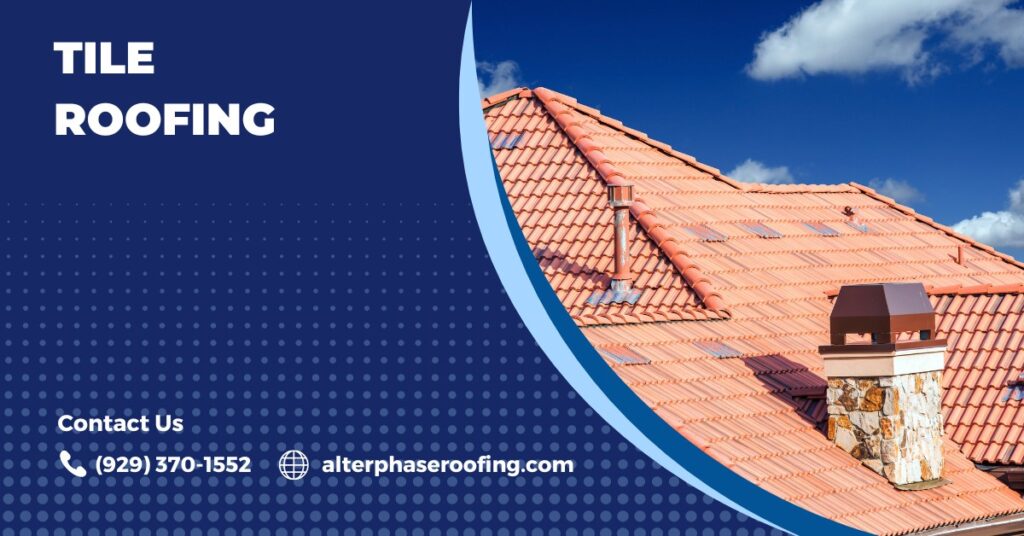
Overview
Clay and concrete tiles provide a distinctive look often associated with Mediterranean-style homes. These tiles are highly regarded for their longevity and aesthetic appeal.
Pros
- Durability: Tile roofs can last 50 years or more with proper maintenance.
- Weather Resistance: Tiles are exceptionally effective at withstanding extreme weather conditions, including hail, wind, and snow.
- Energy Efficiency: Tile roofing can contribute to energy savings by reflecting heat in warmer months.
- Low Maintenance: Once installed, tile roofs require minimal maintenance compared to other materials.
Cons
- Initial Investment: Tile roofing has a steep initial cost, which can be prohibitive for some homeowners.
- Weight: Similar to slate, tile roofs are heavy and may require structural reinforcements.
- Fragility: While durable in many respects, individual tiles can break if walked on or if heavy debris falls on them.
6. Wood Shingles and Shakes
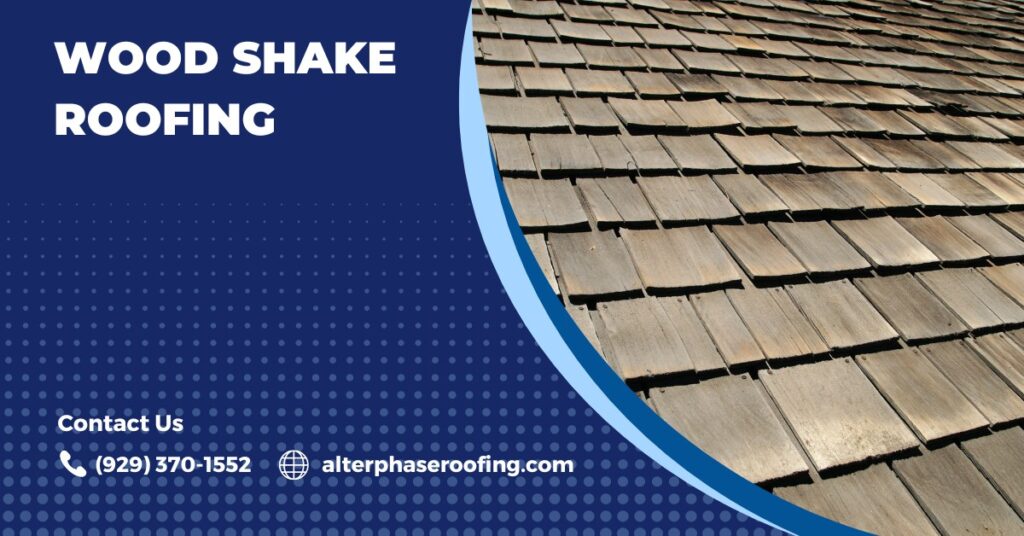
Overview
Wood shingles and shakes lend a rustic charm to homes and are primarily made from cedar, although other wood types are also used.
Pros
- Aesthetic Appeal: They offer a natural, warm appearance that many homeowners love, adding character to any home.
- Insulation Properties: Wood naturally provides good insulation, contributing to energy efficiency.
- Sustainable Material: Many wood shingles are made from sustainably harvested materials.
Cons
- Maintenance Requirements: Wood roofing requires regular maintenance, including treatments to prevent mold and insect damage.
- Susceptibility to Fire: Wood is flammable, and while treatments are available, many homeowners opt for more fire-resistant materials.
- Shorter Lifespan: Wood roofing typically lasts around 20 to 30 years, depending on maintenance and environmental conditions.
Choosing the Right Roofing Material for Your New York Home
Selecting the right roofing material for your home in New York is a critical investment that requires careful consideration of various factors, including cost, longevity, and climate resistance. Each roofing material discussed offers its own unique set of advantages and disadvantages, making it essential to assess your specific needs, budget, and the architectural style of your home.
Consulting a professional roofing contractor can further guide your decision-making process, helping you choose a material that aligns with your long-term goals and the specific conditions of your location. By investing in quality roofing, you not only safeguard your home but also enhance its aesthetic value and energy efficiency for years to come.
Whether you lean toward the affordability of asphalt shingles, the elegance of slate, or the sustainability of metal, understanding the pros and cons of each roofing option is vital to making the best choice for your New York home. Take your time, do your research, and protect your investment with a roof that stands the test of time!

